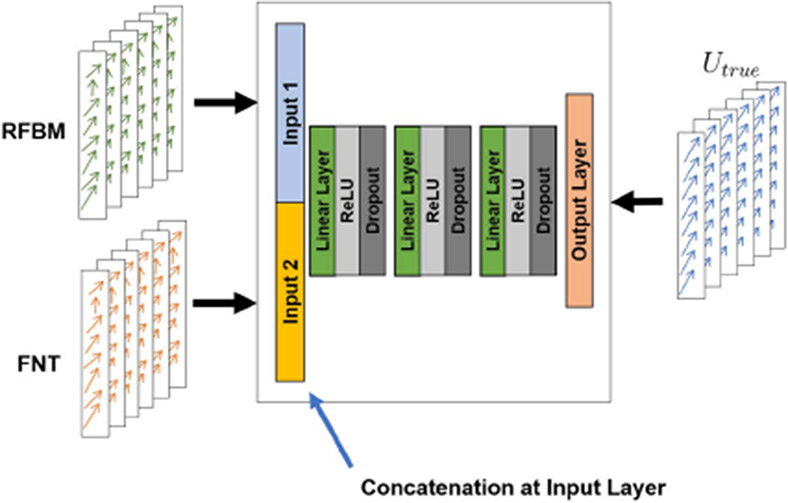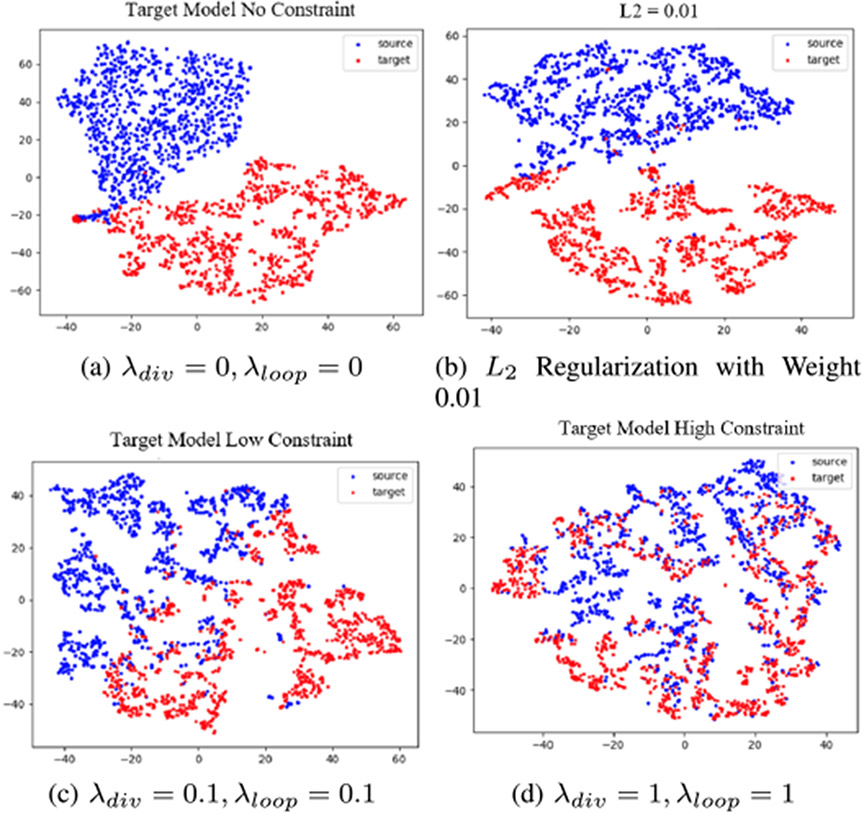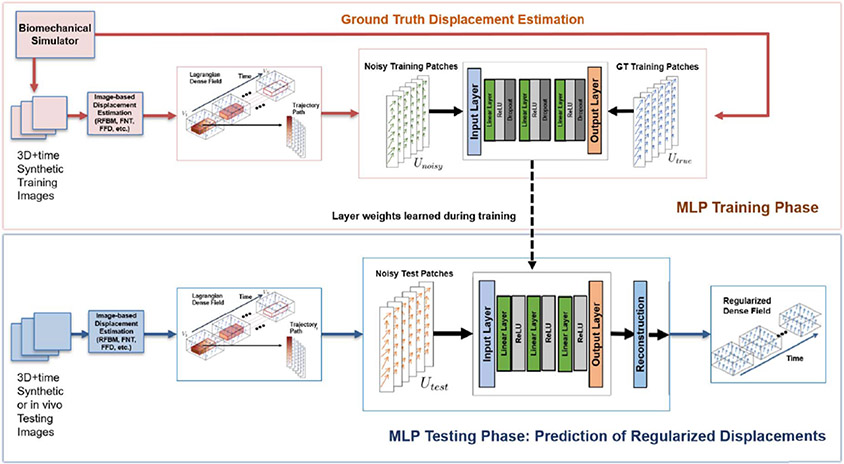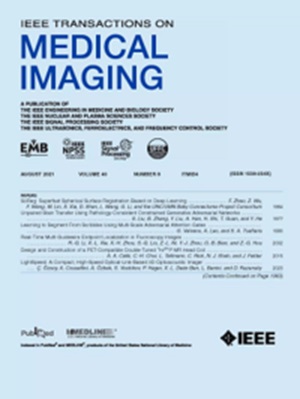基于域自适应的心脏应变分析学习正则化。
IF 8.9
1区 医学
Q1 COMPUTER SCIENCE, INTERDISCIPLINARY APPLICATIONS
引用次数: 7
摘要
利用3D+时间超声心动图(4DE)进行可靠的运动估计和应变分析,定位和表征心肌损伤,对早期发现和有针对性的干预有价值。然而,由于4DE固有的图像特性导致的低信噪比,运动估计很困难,而智能正则化对于产生可靠的运动估计至关重要。在这项工作中,我们将领域自适应的概念融入到监督神经网络正则化框架中。我们首先提出了一种具有生物力学约束的半监督多层感知器(MLP)网络,用于学习具有更多生理上似是而非的位移的潜在表示。我们扩展了这个框架,在合成数据上加入了一个监督损失项,并展示了生物力学约束对网络领域适应能力的影响。我们用植入的声微米在体内数据上验证了半监督正则化方法。最后,我们展示了我们的半监督学习正则化方法使用估计的区域应变图识别梗死区域的能力,该方法与从死后切除的心脏手动追踪梗死区域的能力非常一致。本文章由计算机程序翻译,如有差异,请以英文原文为准。



Learning-Based Regularization for Cardiac Strain Analysis via Domain Adaptation.
Reliable motion estimation and strain analysis using 3D+ time echocardiography (4DE) for localization and characterization of myocardial injury is valuable for early detection and targeted interventions. However, motion estimation is difficult due to the low-SNR that stems from the inherent image properties of 4DE, and intelligent regularization is critical for producing reliable motion estimates. In this work, we incorporated the notion of domain adaptation into a supervised neural network regularization framework. We first propose a semi-supervised Multi-Layered Perceptron (MLP) network with biomechanical constraints for learning a latent representation that is shown to have more physiologically plausible displacements. We extended this framework to include a supervised loss term on synthetic data and showed the effects of biomechanical constraints on the network’s ability for domain adaptation. We validated the semi-supervised regularization method on in vivo data with implanted sonomicrometers. Finally, we showed the ability of our semi-supervised learning regularization approach to identify infarct regions using estimated regional strain maps with good agreement to manually traced infarct regions from postmortem excised hearts.
求助全文
通过发布文献求助,成功后即可免费获取论文全文。
去求助
来源期刊

IEEE Transactions on Medical Imaging
医学-成像科学与照相技术
CiteScore
21.80
自引率
5.70%
发文量
637
审稿时长
5.6 months
期刊介绍:
The IEEE Transactions on Medical Imaging (T-MI) is a journal that welcomes the submission of manuscripts focusing on various aspects of medical imaging. The journal encourages the exploration of body structure, morphology, and function through different imaging techniques, including ultrasound, X-rays, magnetic resonance, radionuclides, microwaves, and optical methods. It also promotes contributions related to cell and molecular imaging, as well as all forms of microscopy.
T-MI publishes original research papers that cover a wide range of topics, including but not limited to novel acquisition techniques, medical image processing and analysis, visualization and performance, pattern recognition, machine learning, and other related methods. The journal particularly encourages highly technical studies that offer new perspectives. By emphasizing the unification of medicine, biology, and imaging, T-MI seeks to bridge the gap between instrumentation, hardware, software, mathematics, physics, biology, and medicine by introducing new analysis methods.
While the journal welcomes strong application papers that describe novel methods, it directs papers that focus solely on important applications using medically adopted or well-established methods without significant innovation in methodology to other journals. T-MI is indexed in Pubmed® and Medline®, which are products of the United States National Library of Medicine.
 求助内容:
求助内容: 应助结果提醒方式:
应助结果提醒方式:


